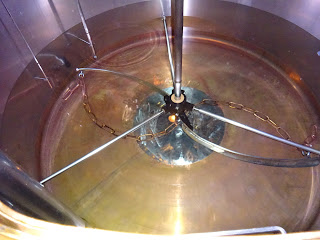Hop Back Summer Lightning was on, an experiment in making a golden cask ale, something which sadly never caught on. This was after all the days of dark mild. Though it seems modern craft brewers are now giving it another go and it could turn out to the saviour of cask. Hurrah!
King and Barnes were still going, as were Mitchells and Maclays. The latter might explain why the St Austell range looks rather different to how it is now. I did drink some St Austell beers down in Croyde back in those pre-Roger Ryman days and I have to say they weren't very good.
For those too young to know the ancient art of working out the alcohol content from the original gravity you subtract 1000 from the mysterious four figure number after the beer name and divide the remainder by ten to get the approximate ABV.
Belhaven was still independent, and their marketing department really went to town on the beer names, having all of 60 up to 90 shillings (shillings were the recently introduced money unit they had in Scotland. They were worth 12d each which could take some effort with the maths, but it was certainly less effort than having to carry chickens around). Bruces brewery was the Firkin brewpub chain. It's a shame brewpubs never caught on. Exmoor Gold was another doomed attempt at golden cask ale. Didn't these people know all everyone drank was dark mild?
Gales still existed, and put on a light mild for those getting bored of dark mild. Fullers had their trilogy of parti-gyled beers and there's a couple of breweries, including Harvey's going for the classic offering of mild and bitter. Brown bitter would finally come into its own, overtaking dark mild in sales figures around the back end of 2012, before beings swept away by craft keg in 2013.
Thwaites had not just a mild but also a best mild for those looking to move from around 3% to close to 3.5% ABV. And Titanic had a couple of beers on that weren't plum flavoured.
Looking at the ticking I was very abstemious, only drinking three halves, which does conflict slightly of the recollections that the the Pig's Ear was an alcoholic wipe out. I guess I'm suffering from false memory syndrome.
Curiously, considering we were middle of the dark (mild) ages CAMRA were promoting mild in the programme. Not sure what's going on there. It's almost as if even as far back as 1990 mild was rarely seen. Nah, that can't be right, must be that false memory syndrome again or something.




















































